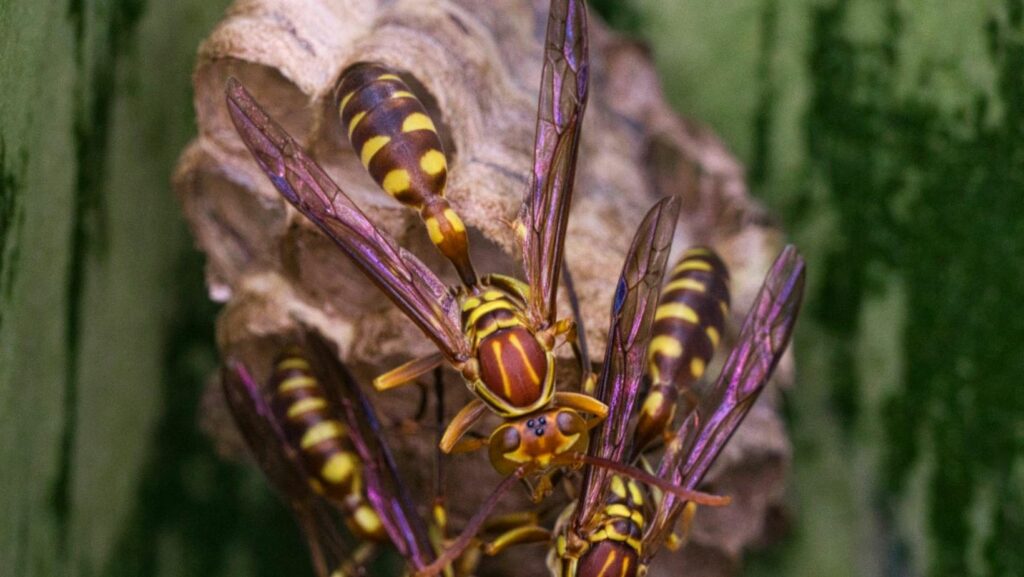Wasps and hornets can pose significant risks to your home and family. Removing their nests safely and efficiently is crucial for maintaining a safe environment. Understanding the best methods will help you manage these pests effectively.
Dealing with wasps and hornets around your home can be a daunting task. These insects not only cause discomfort but can also pose serious threats due to their stings. It is essential to know how to remove their nests safely without causing harm to yourself or others.
Identifying the Problem
The first step in tackling a wasp or hornet problem is identifying the location of their nests. Typically, these insects build their nests in sheltered spots such as eaves, attics, or even underground. Knowing where they are nesting is crucial before planning your removal strategy. Mid-summer is usually when wasp activity peaks, making it easier to spot their nests. If you notice increased wasp activity around a particular area of your home, it’s time to investigate further.
Once you have located the nest, it’s important to assess the level of infestation. Smaller nests can often be managed with DIY solutions, but larger infestations may require professional intervention. A careful assessment will help you determine the best wasp infestation solution for your situation. Remember, disturbing a nest without proper preparation can lead to aggressive behavior from the insects.
Choosing the Right Removal Method
There are several methods available for removing wasp and hornet nests, each with its own set of advantages and disadvantages.

Chemical sprays are commonly used and can be effective if applied correctly. However, it’s important to read and follow all safety instructions on the product label to avoid any risks to yourself or your pets. If you prefer a more natural approach, there are also non-toxic alternatives such as soap and water solutions that can help in deterring wasps.
In some cases, physical removal of the nest might be necessary. This method involves knocking down the nest using a long pole or similar tool while wearing protective clothing. It’s crucial to carry out this task during early morning or late evening when wasps are less active. Always ensure you have an escape route planned should the situation become hazardous.
Professional Assistance
If you’re dealing with a particularly large nest or an aggressive species of wasps or hornets, seeking professional help may be the safest option. Pest control experts have the knowledge and equipment needed to handle such situations effectively without putting anyone at risk. They can also provide advice on preventing future infestations by identifying potential nesting sites around your property.

Professional services may come at a cost but they offer peace of mind knowing that the job will be done thoroughly and safely. Additionally, many pest control companies offer guarantees on their work, ensuring that if the problem persists, they will return to address it at no extra charge.
Preventing Future Infestations
After successfully removing a wasp or hornet nest, it’s important to take steps to prevent future infestations. Regularly inspect your property for signs of new nests, especially during peak seasons like spring and summer. Sealing cracks and crevices around your home can help deter these insects from finding new nesting sites.
Maintaining clean outdoor areas by promptly disposing of food waste and securing garbage bins can also reduce the attractiveness of your property to wasps and hornets. Planting certain types of plants known to repel these insects, such as mint or eucalyptus, around your garden can serve as an additional deterrent.
By staying vigilant and implementing these preventive measures, you can keep your home safe from wasp and hornet infestations in the future.
